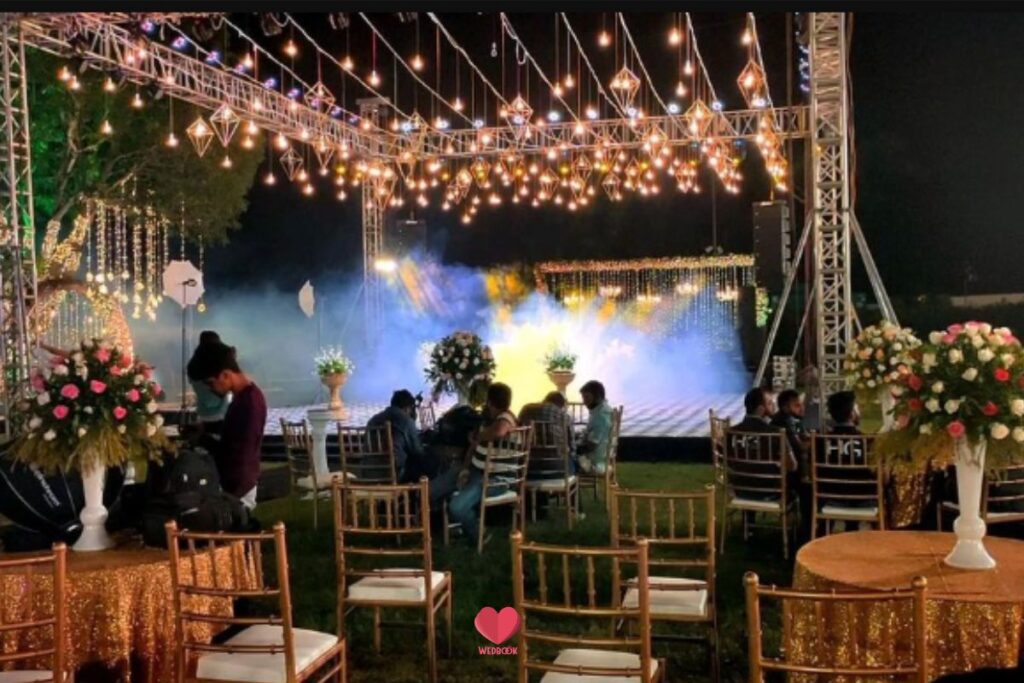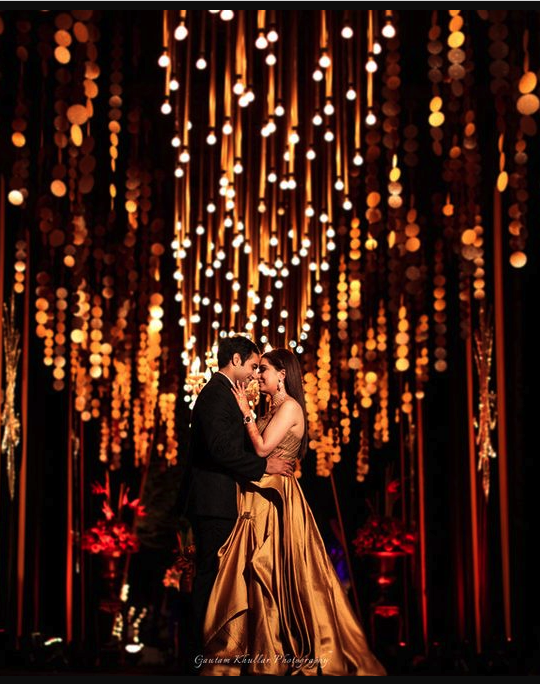I don’t know about you, but the one night I most look forward to at any wedding is a Sangeet night! Filled with creative performances alongside Bollywood tunes that fuel energy and united by a fun aura of competition between the bride’s and the groom’s side, a sangeet night is all about entertainment and enjoyment – minus the rituals. Planning a Sangeet – on the other hand – is a time-consuming process. Brainstorming on songs, segregating groups, and then, dealing with last-minute changes to accommodate everyone, can be an all-consuming process. The good news is there are some helpful tips to make the planning less overwhelming. Below, find our top tips to plan an epic Sangeet Night.
#1 List Down All The Participants
The foremost step to planning an epic sangeet night is to write the list of everyone who will dance on the main day, or those who you think will dance. Once the list is done, ask who is ready to hit the stage and who won’t be able to do the same, so you have finalized the names of all the participants for the sangeet. This narrows down things smartly so you can proceed to the next part of planning your sangeet, segregating the performances.
#2 Segregate Based On Age
Once you know who all are ready to practice and dance on the main night, the process of segregation starts. This will be done based on the songs selected, the time, and the age of the participants. You can have one performance for siblings, one for friends, one amalgamation of songs for young couples, and another medley for the elder generation. If there’s a tiff between someone in the group, then put them in separate performances to diffuse the tension.
#3 Time The Performances
Sangeet shouldn’t exceed a total of 4 hours. Somewhere between two to three hours is the sweet spot. This includes any time gaps for games or announcements or even ring exchange ceremonies. To make sure everything gets wrapped on time, time the performance to a minute or two minutes for every song and three minutes for a group. The bride’s and groom’s solo can be 5 minutes each, and the couple’s dance can also be somewhere around this time. More dances means less time for each, and vice-versa. The goal is to keep it engaging without stretching any performance till the point it becomes boring.
#4 Mentally Prepare For Delays
Small delays at weddings are completely normal, and nothing to worry about! However, if your sangeet function is outdoors and in the city, you will have to stop the music at 10, making it imperative for things to start on time. In this case, have someone who brings everyone together and starts things on time. Know that things can get delayed still and have a backup plan in place, just in case!
#5 Invest In A Good Emcee
A skilled Emcee has the charisma, adaptability, and timing to engage the audience, foster interaction, and retain their attention. A Sangeet event will become more entertaining with an Emcee who can playfully announce the performance, knows the right questions to ask the crowd (fun but not demeaning), and mold the words according to the energy. Pick an Emcee carefully, a wrong one can do the opposite and completely spoil the mood.
#6 Choose An Aesthetic & Photographic Stage
The sangeet stage and the backdrop should complement the entire decor theme, but the harmonization isn’t limited to that. The stage should also go with the couple’s outfit so it doesn’t clash in the photos and instead elevates your look. LED stages have become popular lately, but many photographers and videographers have taken a stand against them. The bright, ever-changing lights don’t allow set lighting for the candid shots, compromising the quality. Opt for a backdrop and stage that helps with the aesthetic – both in real and through photographs!
#7 Plan For Two Outfits
Sangeet isn’t restricted to the choreographed performances, the after-party where everyone dances to the tunes of the DJ is also an unmissable part of any Sangeet event. To revel in this part of the night, change into something comfortable. This can be an anarkali dress or a kurti set, or for brides who break the shackles of traditions, a PJ works too! Have this dress ready beforehand so you can change it quickly after the staged part of the night.
#8 Delegate To Win
Lighten the hold of handling your wedding events. You have numerous friends, siblings, and cousins who are more than ready to help you. For brides with Type A personalities, it might feel like you have to do everything so it all turns out to be perfect. But that’s not practical – or possible. Instead, choose to delegate beforehand and have different people handling different responsibilities. Break up the duties depending on the skills each one possesses. Someone who is a great organizer might not be good at interacting with guests. Play with their strengths and have a team ready so the revelries are handled with ease and as a bride, you can enjoy the functions without worrying about the execution.
#9 Schedule Fun Games
Sangeet isn’t all about killer performances, a rocking playlist, and a mesmerizing theme, but also about getting the guests engaged. Fun games, stage competitions (an interactive couple shoe game counts too!), and even awards can engage the guests and maintain their interest in the event! This is another reason why you need to hire a good Emcee who can make the game interesting with the introduction, energy, and several people.
#10 Let Go!
Your chachi backs off last minute from the performance or a kid comes crying into your dance – there are just some things that go beyond your control. Holding on to things that “just happen” out of nowhere for no reason whatsoever can bother you, but the power of letting go can help you feel at peace and embrace the present moment of your wedding. Prioritize the top 10 things that matter to you focus on those and let the other menial things slip away from your mind.
#11 Choose A Comfortable Sangeet Dress
Sangeet dress’ decisive elements should include comfort, besides other important factors like color, style, and blending with the theme. A dress that won’t weigh you down and lets you dance in twirl in should be the priority. Move in the outfit when you’re trying it on. Reduce the can-can or try a different style if it restricts the movement. If by any chance you fall in love with a dress that doesn’t align with an energetic dance, choreograph your dance to movements which doesn’t require much movement from below the waist so you don’t have to compromise with your dream dress or a flawless solo sangeet dance!
#12 Affix The Accessories Firmly
You’ve spent a chunk of your budget on your wedding jewelry, including the trinkets for your sangeet. As much as you’d want to flaunt them on the main day and give them their due attention, they do need to harmonize with the dynamic moves. By that we mean, stay in place so you don’t have to worry about them! To affix them firmly, tie the necklace firmly on the back, use double-sided tape for mang tikkas, and earlobe patches for heavy earrings. For those wearing a real bracelet, make sure it’s tied properly so you don’t risk dropping it during the performance or the dance party!
Buy a good double-sided tape here.
#13 Include Floating Starters
You don’t want to risk guests wandering away from the main hall just because they are hungry. A sangeet night can last for two to three hours easily. Some, with bigger families or enthusiastic performers, last for four hours. To hold the crowd, you don’t just need to plan for entertainment, but also food. Sangeet is the day when you need to include more floating starters in the menu. Around five to eight different types of satiating foods will work. Some ideas are mini-samosas, chilly potatoes, noodles, sandwich dhoklas, tikkas (paneer or mushroom), spring rolls, etc. To save on plate costs, you can reduce the number of live counters instead – which take up a major portion of the food costs in a wedding anyway.







